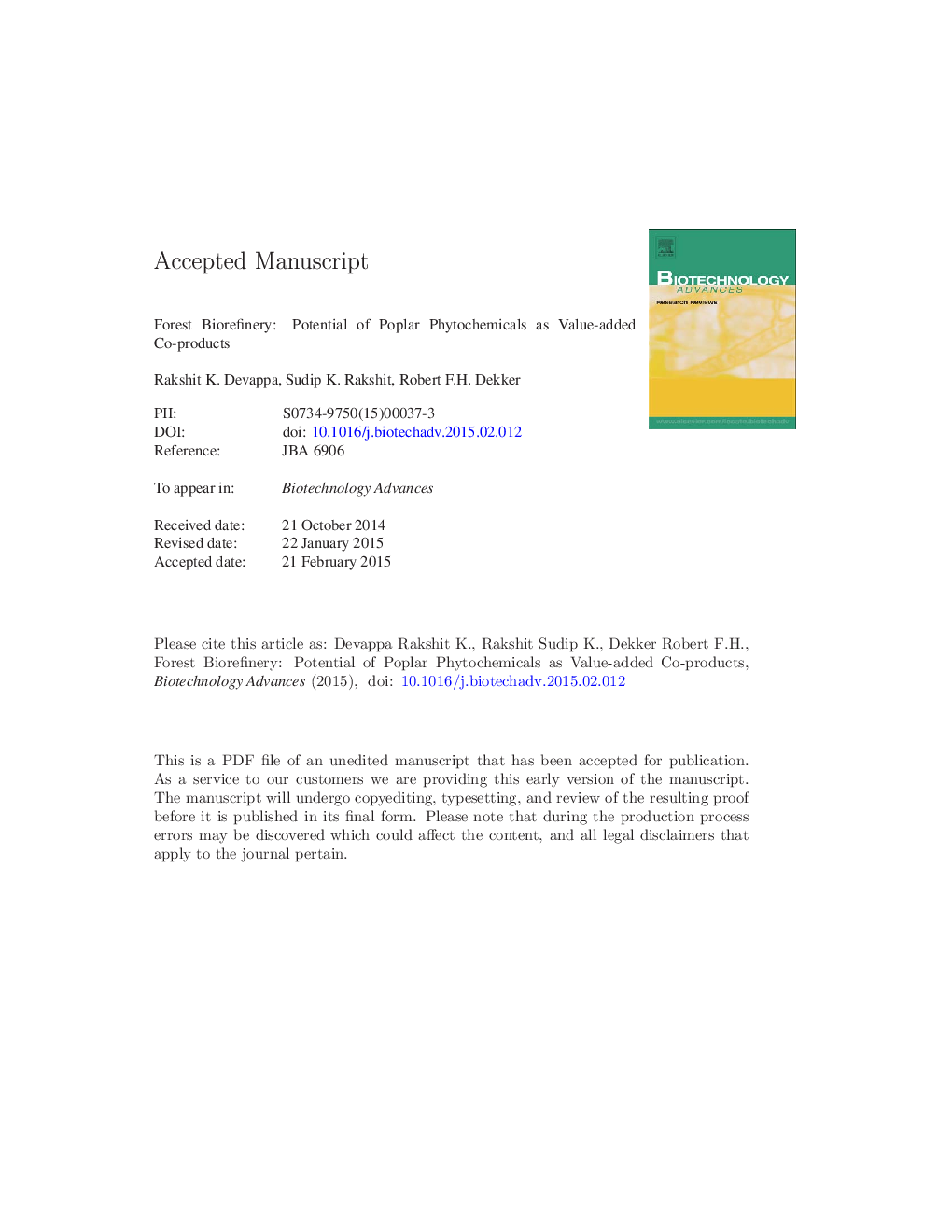| کد مقاله | کد نشریه | سال انتشار | مقاله انگلیسی | نسخه تمام متن |
|---|---|---|---|---|
| 10231456 | 1199 | 2015 | 121 صفحه PDF | دانلود رایگان |
عنوان انگلیسی مقاله ISI
Forest biorefinery: Potential of poplar phytochemicals as value-added co-products
ترجمه فارسی عنوان
جنگل های زراعی: احتمال تولید فیتوشیمیائی صنوبر در صنایع ارزش افزوده
دانلود مقاله + سفارش ترجمه
دانلود مقاله ISI انگلیسی
رایگان برای ایرانیان
کلمات کلیدی
موضوعات مرتبط
مهندسی و علوم پایه
مهندسی شیمی
بیو مهندسی (مهندسی زیستی)
چکیده انگلیسی
The global forestry industry after experiencing a market downturn during the past decade has now aimed its vision towards the integrated biorefinery. New business models and strategies are constantly being explored to re-invent the global wood and pulp/paper industry through sustainable resource exploitation. The goal is to produce diversified, innovative and revenue generating product lines using on-site bioresources (wood and tree residues). The most popular product lines are generally produced from wood fibers (biofuels, pulp/paper, biomaterials, and bio/chemicals). However, the bark and other tree residues like foliage that constitute forest wastes, still remain largely an underexploited resource from which extractives and phytochemicals can be harnessed as by-products (biopharmaceuticals, food additives and nutraceuticals, biopesticides, cosmetics). Commercially, Populus (poplar) tree species including hybrid varieties are cultivated as a fast growing bioenergy crop, but can also be utilized to produce bio-based chemicals. This review identifies and underlines the potential of natural products (phytochemicals) from Populus species that could lead to new business ventures in biorefineries and contribute to the bioeconomy. In brief, this review highlights the importance of by-products/co-products in forest industries, methods that can be employed to extract and purify poplar phytochemicals, the potential pharmaceutical and other uses of >Â 160 phytochemicals identified from poplar species - their chemical structures, properties and bioactivities, the challenges and limitations of utilizing poplar phytochemicals, and potential commercial opportunities. Finally, the overall discussion and conclusion are made considering the recent biotechnological advances in phytochemical research to indicate the areas for future commercial applications from poplar tree species.
ناشر
Database: Elsevier - ScienceDirect (ساینس دایرکت)
Journal: Biotechnology Advances - Volume 33, Issue 6, Part 1, 1 November 2015, Pages 681-716
Journal: Biotechnology Advances - Volume 33, Issue 6, Part 1, 1 November 2015, Pages 681-716
نویسندگان
Rakshit K. Devappa, Sudip K. Rakshit, Robert F.H. Dekker,
